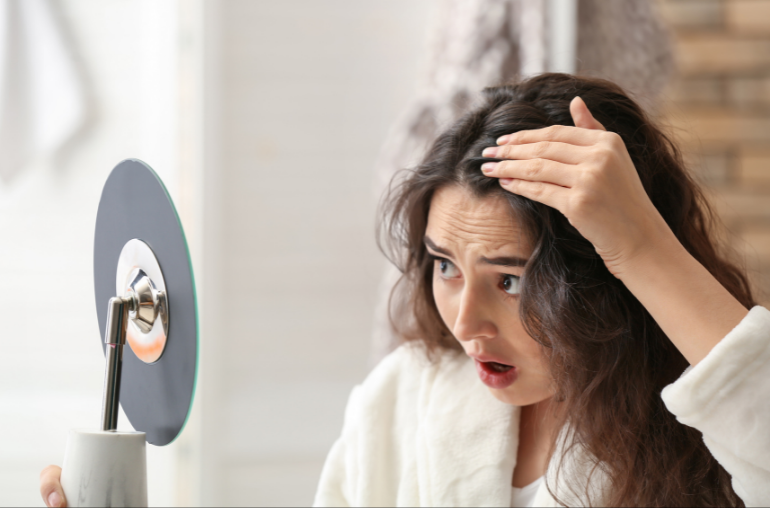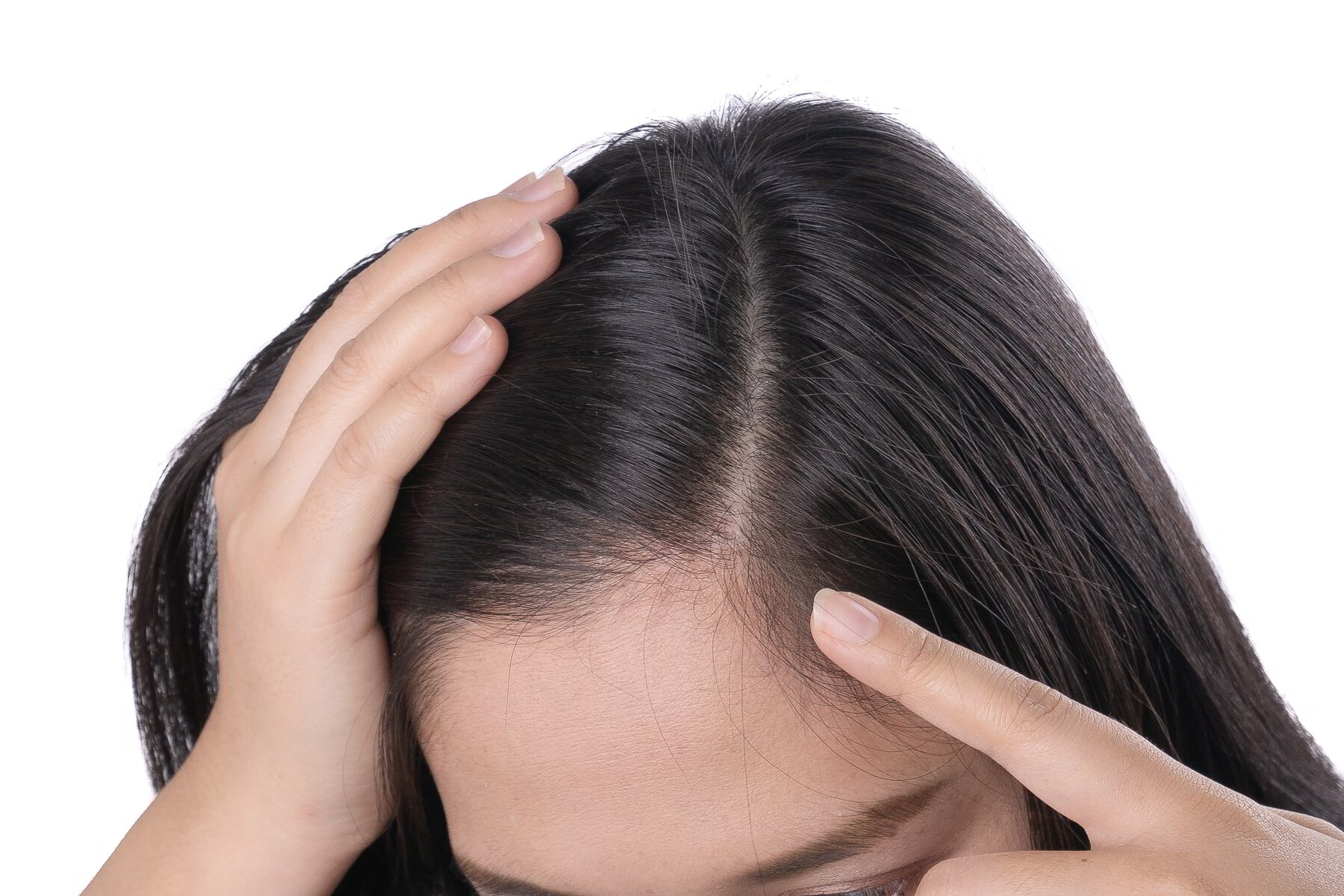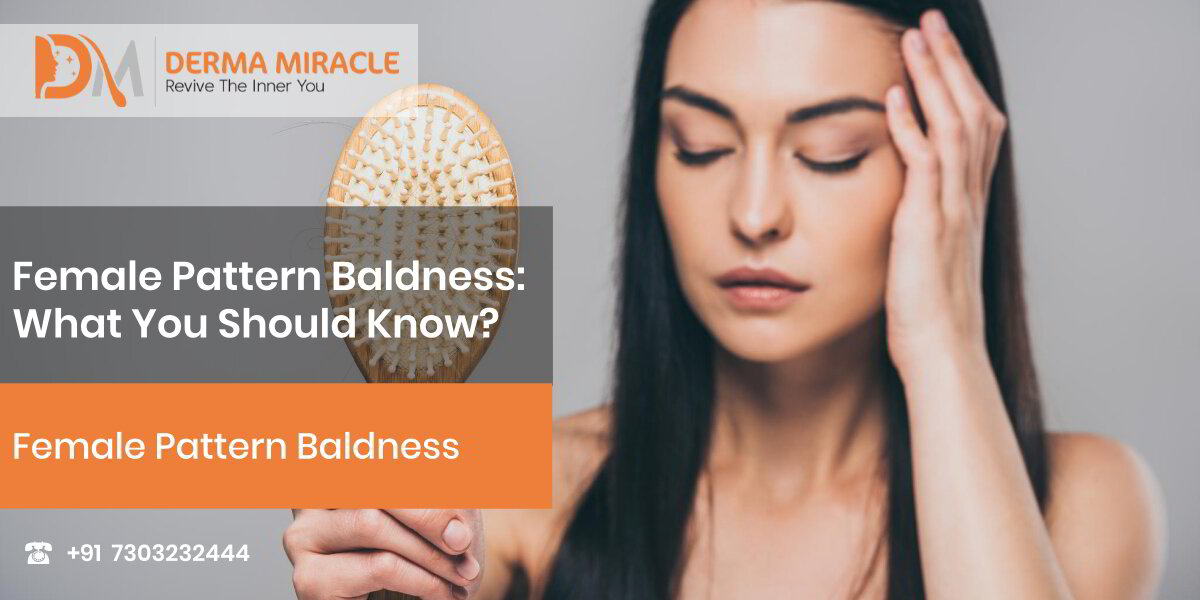
Table Of Content
-
What is Female Pattern Baldness?
-
What does Female Pattern Baldness look like?
-
Can Genetics cause Female Pattern Baldness?
-
How is it Diagnosed?
-
Treatment for Female Pattern Baldness?
-
Can Female Pattern Baldness be Prevented?
What is Female Pattern Baldness?
Female pattern baldness is a condition that causes thinning of the hair on a woman’s head. It is typically seen in women who have gone through menopause and can be attributed to low levels of estrogen as well as genetics.

What does Female Pattern Baldness look like?
Thinning hair and more shedding than usual are signs of female pattern baldness. Hair may be lost from anywhere on your head, but it will typically happen at a higher rate around your temples or along the length of the top of your scalp.

Can Genetics cause Female Pattern Baldness?
As mentioned above, genetics can play a role in female pattern baldness. Particularly, female pattern baldness can be hereditary if you have a mother, grandmother, or sister who experienced the condition.

How is it Diagnosed?
As mentioned above, female pattern baldness is often diagnosed through clinical evaluation by a dermatologist because the symptoms are similar to those of an underlying thyroid condition or iron deficiency. Therefore, a blood test may be required to rule out other causes of hair loss.

Treatment for Female Pattern Baldness?
Female Pattern Baldness can be treated by oral medications, topical creams or lotions, and treatments with injections. Treatment for female pattern baldness should be customised to the individual’s hair loss condition and preferences.
Common treatments include:
- Rogaine, a topical lotion that is applied directly to the scalp two times per day.
- Propecia, an oral medication taken once a day for three months and then twice per week thereafter.
- Latisse, a topical lotion that is applied to the upper eyelashes twice per day and has been shown to grow hair in women.
Alternatively, some people are able to achieve “hair-replacement” by wearing toupees or other kinds of wigs on their head. There are also surgical options for female pattern baldness sufferers, but these procedures are typically expensive and invasive.But make sure you talk to your doctor before applying any of these treatments. Different solutions work best for different people, and there are possible side effects that should be taken into account.

Can Female Pattern Baldness be Prevented?
You can prevent female pattern baldness by maintaining a healthy lifestyle. That includes not smoking, minimizing alcohol intake, and eating well-balanced meals.
Above all else, you should talk to your doctor about any concerns related to hair loss or scalp conditions that might warrant treatment with medication (i.e., minoxidil). Your physician will be able to distinguish between alopecia areata (an autoimmune disorder that causes hair loss), telogen effluvium (a condition when a sudden change in hormones may cause stress on the follicles, resulting in temporary shedding of hairs), and female pattern baldness.

CONSULT DEMAMIRACLE
Female Pattern Baldness: What You Should Know?
ACT BEFORE IT’S TOO LATE

FREE CONSULTATION AVAILABLE
Contact Us
